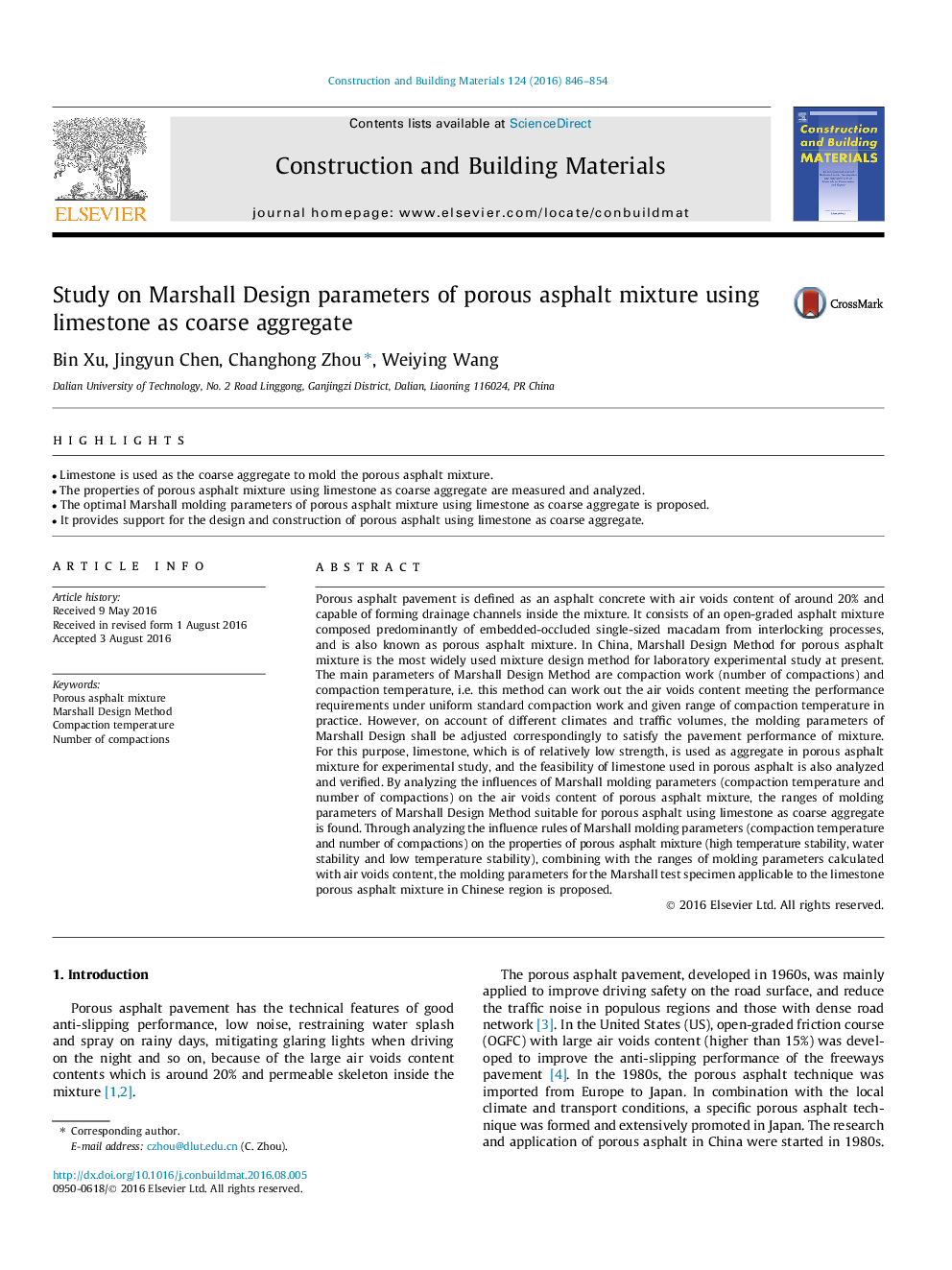| Article ID | Journal | Published Year | Pages | File Type |
|---|---|---|---|---|
| 6718022 | Construction and Building Materials | 2016 | 9 Pages |
Abstract
Porous asphalt pavement is defined as an asphalt concrete with air voids content of around 20% and capable of forming drainage channels inside the mixture. It consists of an open-graded asphalt mixture composed predominantly of embedded-occluded single-sized macadam from interlocking processes, and is also known as porous asphalt mixture. In China, Marshall Design Method for porous asphalt mixture is the most widely used mixture design method for laboratory experimental study at present. The main parameters of Marshall Design Method are compaction work (number of compactions) and compaction temperature, i.e. this method can work out the air voids content meeting the performance requirements under uniform standard compaction work and given range of compaction temperature in practice. However, on account of different climates and traffic volumes, the molding parameters of Marshall Design shall be adjusted correspondingly to satisfy the pavement performance of mixture. For this purpose, limestone, which is of relatively low strength, is used as aggregate in porous asphalt mixture for experimental study, and the feasibility of limestone used in porous asphalt is also analyzed and verified. By analyzing the influences of Marshall molding parameters (compaction temperature and number of compactions) on the air voids content of porous asphalt mixture, the ranges of molding parameters of Marshall Design Method suitable for porous asphalt using limestone as coarse aggregate is found. Through analyzing the influence rules of Marshall molding parameters (compaction temperature and number of compactions) on the properties of porous asphalt mixture (high temperature stability, water stability and low temperature stability), combining with the ranges of molding parameters calculated with air voids content, the molding parameters for the Marshall test specimen applicable to the limestone porous asphalt mixture in Chinese region is proposed.
Related Topics
Physical Sciences and Engineering
Engineering
Civil and Structural Engineering
Authors
Bin Xu, Jingyun Chen, Changhong Zhou, Weiying Wang,
